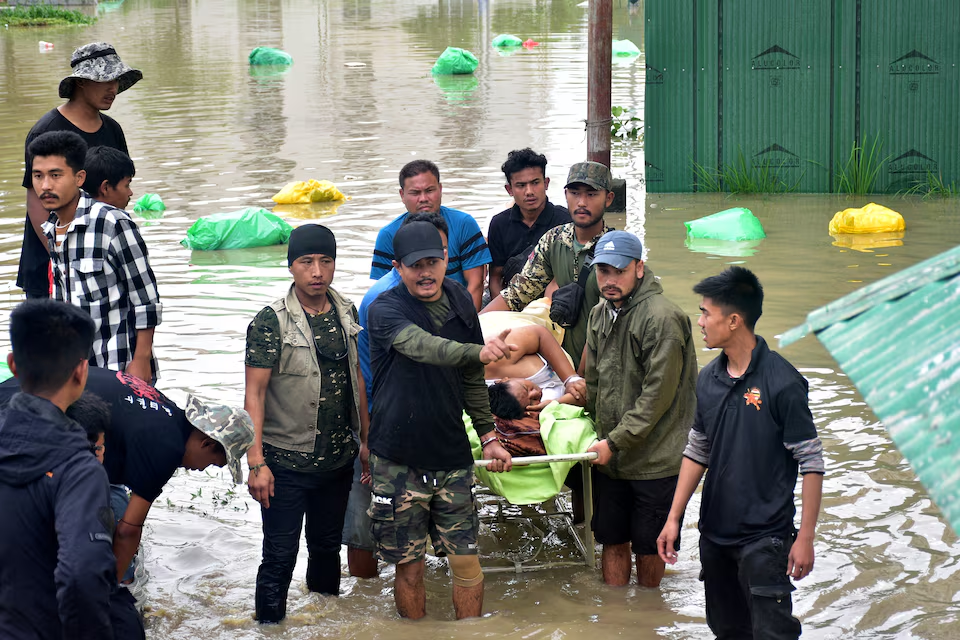Severe flooding and landslides caused by torrential rains have killed at least 34 people in India’s northeastern states, officials reported on June 2. The states of Assam, Sikkim, and Arunachal Pradesh were the worst affected, with rivers overflowing, roads destroyed, and thousands forced to flee their homes.
The region, known for its fragile mountain terrain and heavy monsoons, experienced relentless rainfall over several days. The India Meteorological Department (IMD) issued red alerts for multiple districts as rainfall totals surpassed monthly averages in just a few days. According to officials, the Brahmaputra River and its tributaries breached embankments, inundating towns and villages across Assam.
Among the dead were children and elderly residents who were unable to evacuate in time. In Sikkim, rescue teams recovered the bodies of seven people buried under a landslide in the district of Mangan. In Assam, 19 deaths were confirmed in separate incidents of drowning and house collapses, while eight others died in Arunachal Pradesh due to mudslides and collapsing infrastructure.
Rescue operations are underway across the affected states. The National Disaster Response Force (NDRF) has deployed teams with boats, drones, and medical aid to assist with evacuations and distribute relief supplies. Indian Army personnel have also joined the rescue efforts in remote hilly regions that are inaccessible by road.
Over 250,000 people have been displaced in Assam alone, where floodwaters submerged farmland, disrupted electricity, and contaminated drinking water supplies. Relief camps have been set up in higher ground areas to provide shelter to the displaced. State authorities have warned that continued rainfall in upstream areas of neighboring Bhutan and Arunachal Pradesh could further worsen the situation.
“We are facing a critical situation. The water levels are rising fast, and more rain is forecast,” said Assam Chief Minister Himanta Biswa Sarma. “We urge all citizens to move to safer areas and cooperate with emergency services.”
In the state of Arunachal Pradesh, flash floods washed away bridges and damaged key roads, isolating several villages. Helicopter sorties have been launched to airlift stranded people and deliver essential supplies to remote regions.
Sikkim, still recovering from previous flash floods earlier this year, witnessed new damage to roads and hydropower infrastructure. Local authorities have suspended all trekking and tourism activities as a precaution.
Climate experts say the frequency and intensity of extreme weather events in the region are increasing, partly due to climate change and environmental degradation. “The Himalayas and surrounding regions are highly vulnerable to intense rainfall events, which are being amplified by global warming,” said Dr. Rajeev Ranjan, a hydrologist at the Indian Institute of Technology.
The central government has pledged financial assistance and disaster relief funds to the affected states. Prime Minister Narendra Modi expressed his condolences to the families of the victims and said that federal agencies are working closely with local administrations to provide all possible support.
Opposition parties criticized the lack of early warning systems and preparedness in flood-prone areas, demanding better long-term planning and infrastructure investments to withstand such disasters.
With monsoon season only beginning, authorities are bracing for further challenges in the coming weeks. The IMD has forecast more heavy rainfall in northeastern India through the first half of June, raising the risk of further floods and landslides. Emergency services remain on high alert across the region as they race to minimize further casualties and damage.
Source; Reuters



